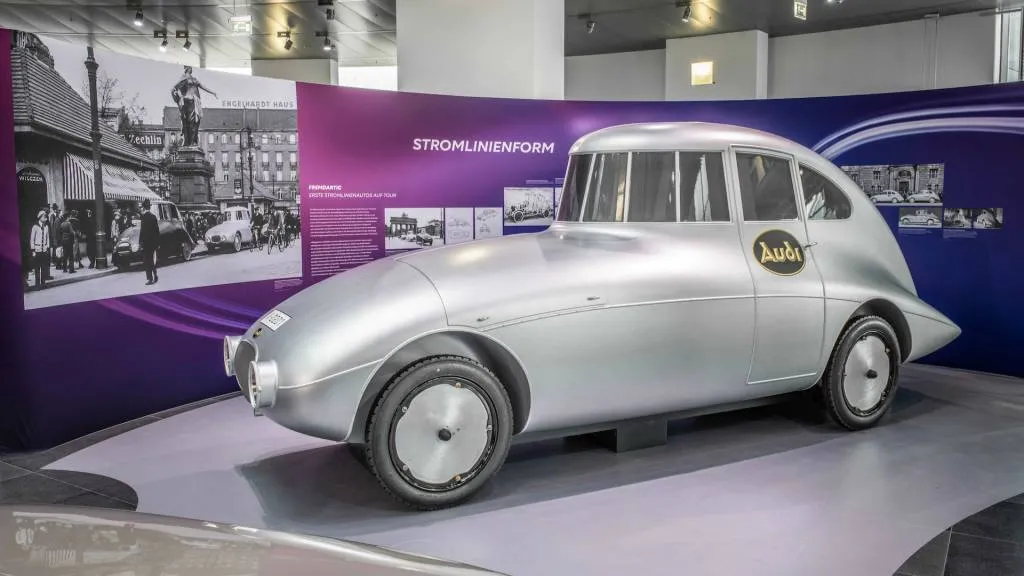Aerodynamics are an important consideration in modern EVs. Lowering aerodynamic drag improves efficiency, allowing for more range from a given battery-pack size.
But it bears emphasis: This is far from a new obsession.
A new exhibit curated by Audi in Germany highlights an earlier era of aerodynamic experimentation. In the 1930s, engineers at the German automaker’s predecessor companies developed wild new body shapes to help reduce drag in combustion-engined cars.
Audi
Performance was as much a motivating factor as efficiency. Auto Union—one of the automakers later merged into the modern incarnation of Audi—applied streamlined bodywork to its Type C race car in 1937, allowing it to reach a top speed of 249 mph in one speed-record run.
Similar principles were also applied to a road-car form factor with the Audi Type C Jaray. It wasn’t just German manufacturers, either—the Chrysler Airflow debuted in 1934 with wind-tunnel-tested styling. But in the case of both the Type C Jaray and the Airflow, aerodynamic designs were just too far out of step with customer tastes in the prewar years. This was long before gas mileage became a concern, so efficiency wasn’t much of a selling point.
Today, though, EVs have made aerodynamics a selling point. The Lucid Air is proudly proclaimed by its manufacturer to be the most aerodynamically efficient luxury car, while Nio claims its EC7 is the most aerodynamic SUV in the world.

Audi
The solar-assisted Lightyear 0 claimed the title of most aerodynamic production car overall—with a coefficient of drag (Cd) or 0.175—but only a few units were built. A recent concept car from Chinese automaker Chery claims a 0.168 Cd thanks to a body shape inspired by tuna, but it hasn’t been confirmed for production.
Electric cars themselves once gave internal-combustion cars (as well as steam cars) competition for auto-industry dominance before fading away. And it bears some questions: Had EVs remained the dominant technology a century ago, would there have been more of an emphasis on aerodynamics in recent decades? And what would the shape of today’s cars be if electric motors, rather than internal-combustion engines, had been the dominant form of propulsion through the 20th century?
What if aero had never gone out of fashion? Leave your thoughts below.
